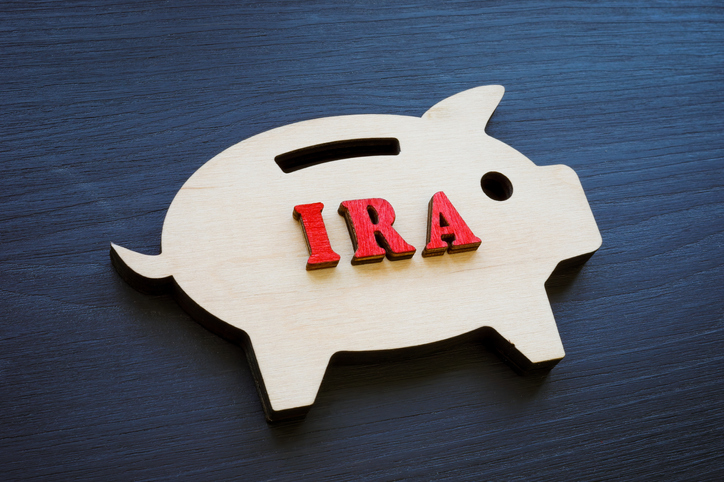Investors with individual retirement accounts (IRAs) are selecting low-cost mutual fund options. The Investment Company Institute (ICI) says 45% of individual retirement account assets are held in mutual funds. That adds up roughly to $6.2 trillion. Overall, in 2021, IRA mutual fund investors paid more in average expense ratios than 401(k) investors paid. Let’s see how IRA investors are tamping down on fees and what investors can learn from that strategy.
A financial advisor could help you create a financial plan for your investment needs and goals.
Where IRA Investors Are Keeping Their Money
The ICI says IRAs make up the largest share of assets in the U.S. retirement market. IRA’s assets totaled $13.9 trillion in 2021, with mutual fund assets making up roughly $6.2 trillion.
Data from the fund association shows that IRA investors tend to hold assets that are “concentrated in lower-cost mutual funds,” the report says.
Expense ratios within various types of mutual funds varied, according to the ICI. They broke down like this:
Equity mutual funds. The expense ratio paid by equity mutual fund investors was 0.54% in 2021, which is below 2000’s 0.98% level.
In 2021, 91% of equity mutual fund assets were held by IRAs invested in mutual funds with expense ratios under 1%, the ICI says. Additionally, the data found that 40% of those were invested in equity mutual funds with expense ratios less than 0.5%.
Hybrid mutual funds. Hybrid mutual fund expense ratios in IRAs dropped to 0.53% in 2021. The percentage is down from 0.55% in 2020 and 0.89% in 2000.
Bond mutual funds. Bond mutual fund expense ratios dropped to 0.37% in 2021, which is down from 0.39% in 2020 and 0.85% in 2000.
Overall, data shows that IRA mutual fund investors paid less in 2021 for average expense ratios. The ratios were more aligned with industrywide mutual fund investors. Investors putting money into IRAs continued to concentrate their assets in lower-cost mutual funds.
What Is an IRA?

An individual retirement account (IRA) is a retirement savings vehicle that provides multiple tax advantages.
The federal government places contribution limits on how much money investors can put in an IRA. It doesn’t matter what type of IRA account you open, including a Roth IRA. In 2022, the IRS says contributions can’t exceed $6,000 per year. However, if you are age 50 and older, you can contribute $7,000.
And unlike a 401(k) account, investors can open an IRA account without having to go through their employer.
In addition to mutual funds, investors may hold these assets:
- Stocks
- Bonds
- Exchange-traded funds (ETFs)
- Annuities
- Unit investment trusts (UITs)
- Real estate
When it comes to real estate investments, there are limitations. The owner of the IRA can’t benefit directly from the property in any way. This includes receiving rental income or living in the property. It can only be used for investment purposes, and the right way to hold real estate in your IRA is through a self-directed IRA.
What Investors Should Know
A small difference in expense ratios can add up over years, so choosing low-cost investments is crucial to protecting your nest egg.
In a recent SmartAsset study, we compared two hypothetical funds that have identical rates of return (6%) but have different expense ratios. Fund A charges 0.15% in fees, while Fund B charges 0.75%. Each fund started with $10,000 in investment.
The seemingly tiny difference between the expense ratios of Fund A (0.15%) and Fund B (0.75%) added up to thousands of dollars over the course of 30 years.
Bottom Line

Like any investor, IRA savers accrue expenses and fees when investing in the underlying assets in their accounts. A minimal difference in fees can add up to thousands of dollars over years. But IRA investors are tamping down on this cost by investing in low-cost mutual funds.
Retirement Investment Tips
- A financial advisor can help you save money on retirement plan fees. SmartAsset’s free tool matches you with up to three financial advisors who serve your area, and you can interview your advisor matches at no cost to decide which one is right for you. If you’re ready to find an advisor who can help you achieve your financial goals, get started now.
- Expense ratios can help you determine your investment strategy. SmartAsset’s free investment tool can also help you figure out how much money you will have for retirement.
Photo credit: ©iStock/designer491, ©iStock/KaraGrubis, ©iStock/Douglas Rissing
